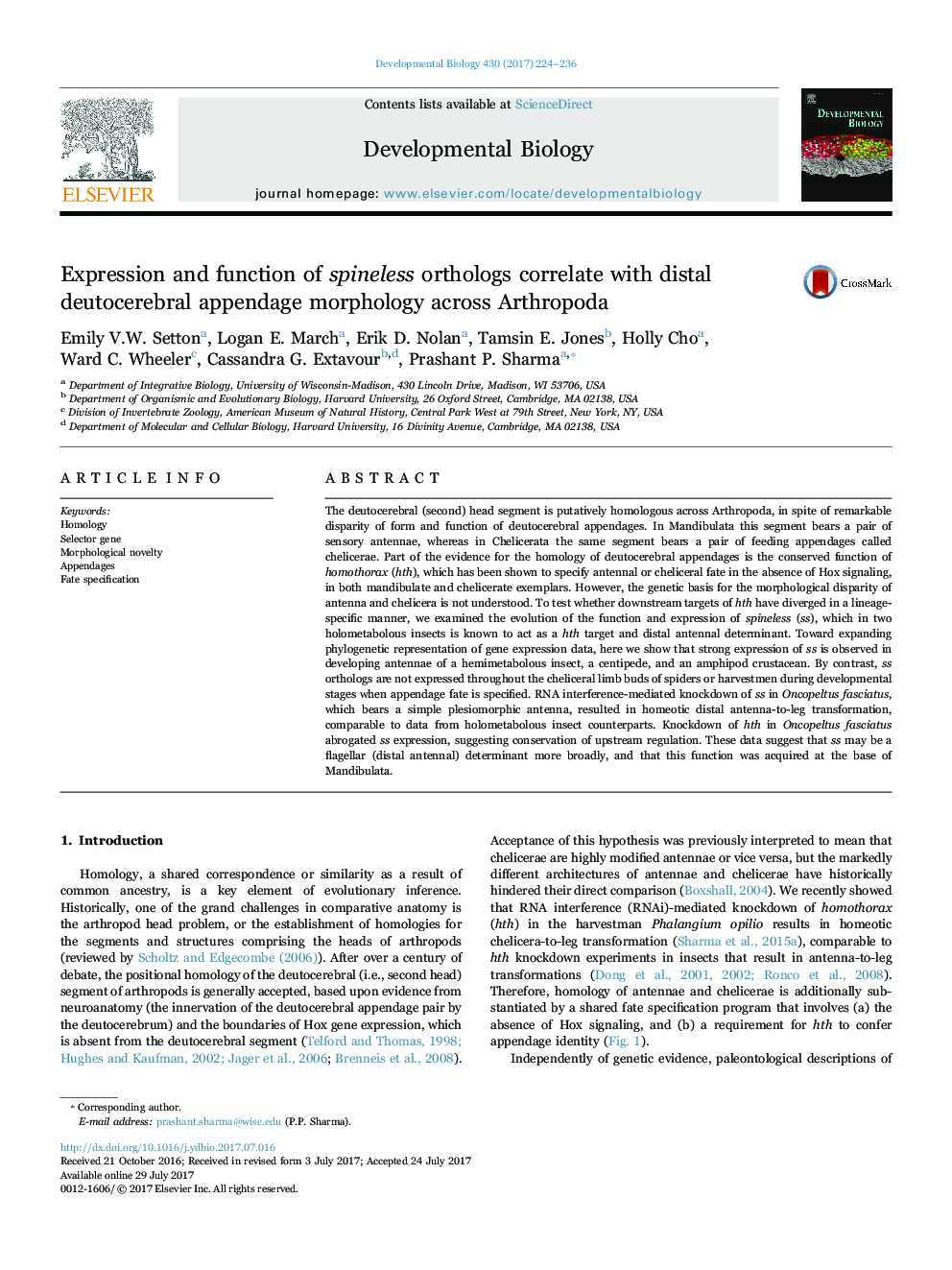| کد مقاله | کد نشریه | سال انتشار | مقاله انگلیسی | نسخه تمام متن |
|---|---|---|---|---|
| 5531830 | 1401816 | 2017 | 13 صفحه PDF | دانلود رایگان |
- spineless is known to be a distal antennal determinant in the fruit fly and the flour beetle.
- Gene expression survey reveals association of spineless with antennae of mandibulate arthropods.
- spineless is required for specification of distal antennal fate in a hemimetabolous insect.
- spineless is not expressed in the distal chelicera of arachnids.
The deutocerebral (second) head segment is putatively homologous across Arthropoda, in spite of remarkable disparity of form and function of deutocerebral appendages. In Mandibulata this segment bears a pair of sensory antennae, whereas in Chelicerata the same segment bears a pair of feeding appendages called chelicerae. Part of the evidence for the homology of deutocerebral appendages is the conserved function of homothorax (hth), which has been shown to specify antennal or cheliceral fate in the absence of Hox signaling, in both mandibulate and chelicerate exemplars. However, the genetic basis for the morphological disparity of antenna and chelicera is not understood. To test whether downstream targets of hth have diverged in a lineage-specific manner, we examined the evolution of the function and expression of spineless (ss), which in two holometabolous insects is known to act as a hth target and distal antennal determinant. Toward expanding phylogenetic representation of gene expression data, here we show that strong expression of ss is observed in developing antennae of a hemimetabolous insect, a centipede, and an amphipod crustacean. By contrast, ss orthologs are not expressed throughout the cheliceral limb buds of spiders or harvestmen during developmental stages when appendage fate is specified. RNA interference-mediated knockdown of ss in Oncopeltus fasciatus, which bears a simple plesiomorphic antenna, resulted in homeotic distal antenna-to-leg transformation, comparable to data from holometabolous insect counterparts. Knockdown of hth in Oncopeltus fasciatus abrogated ss expression, suggesting conservation of upstream regulation. These data suggest that ss may be a flagellar (distal antennal) determinant more broadly, and that this function was acquired at the base of Mandibulata.
Journal: Developmental Biology - Volume 430, Issue 1, 1 October 2017, Pages 224-236
